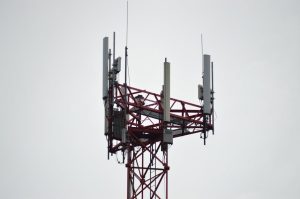Starlink: Revolutionizing Global Internet Connectivity with Satellite Technology

Starlink: Revolutionizing Global Internet Connectivity with Satellite Technology
Starlink is a satellite constellation developed by SpaceX, a private aerospace manufacturer and space transport services company founded by Elon Musk. The project aims to provide high-speed, low-latency internet connectivity worldwide, especially in areas where traditional fiber-optic or cellular networks are unavailable or unreliable.
The Starlink constellation consists of thousands of small satellites in low Earth orbit (LEO), working together to create a network of interconnected satellites that can provide internet access to users on the ground. Each satellite is equipped with advanced technology, including Hall effect thrusters, star trackers, and a compact antenna system, allowing them to communicate with each other and with users on the ground.
The benefits of Starlink are numerous. For one, it has the potential to bridge the digital divide, providing internet access to underserved or remote communities around the world. This can have a significant impact on education, healthcare, and economic development in these areas. Additionally, Starlink can provide backup connectivity during natural disasters or network outages, ensuring that critical communication systems remain operational.
How Starlink Works
So, how does Starlink work? The process begins with the launch of the satellites into LEO, where they are deployed and begin to communicate with each other. Users on the ground can access the internet by purchasing a small, compact terminal, which is used to connect to the Starlink network. The terminal communicates with the satellites, which then relay the data to the desired destination, such as a website or server.
The satellites use a combination of laser and radio communication to transmit data between each other and to the ground. This allows for high-speed, low-latency communication, with latency as low as 20 milliseconds. The satellites are also equipped with advanced navigation and control systems, allowing them to maintain their position and orbit with precision.
Challenges and Controversies
While Starlink has the potential to revolutionize global internet connectivity, it is not without its challenges and controversies. One of the main concerns is the potential for space debris, as the large number of satellites in LEO can increase the risk of collisions and create a hazardous environment for other spacecraft.
Additionally, there are concerns about the impact of Starlink on the night sky, as the satellites can be visible from the ground and may interfere with astronomical observations. SpaceX has taken steps to mitigate these concerns, such as using a darker coating on the satellites to reduce their visibility and implementing measures to reduce the risk of collisions.
The Future of Starlink
So, what does the future hold for Starlink? The project is still in its early stages, with thousands of satellites yet to be launched. However, the potential for growth and expansion is significant. SpaceX plans to use Starlink to provide internet connectivity to a wide range of customers, from individual consumers to large enterprises and governments.
The company is also exploring the use of Starlink for other applications, such as satellite imaging and Earth observation. With its advanced technology and global coverage, Starlink has the potential to become a major player in the global satellite industry, and its impact on the world of communication and connectivity will be significant.
